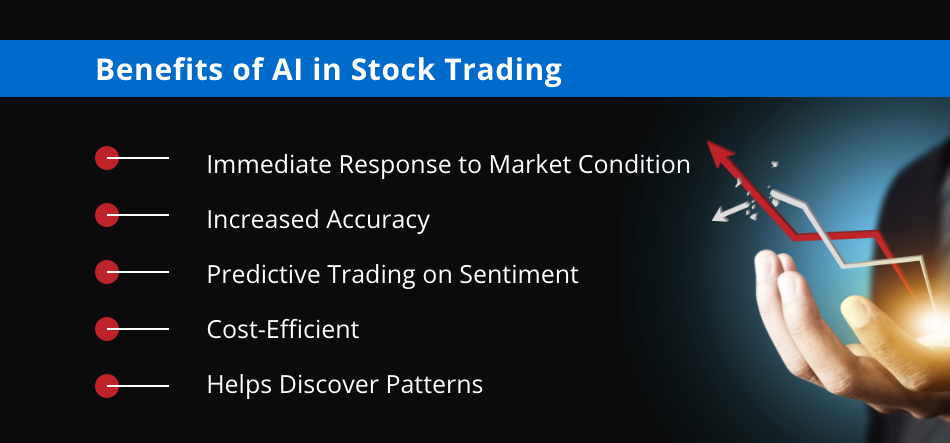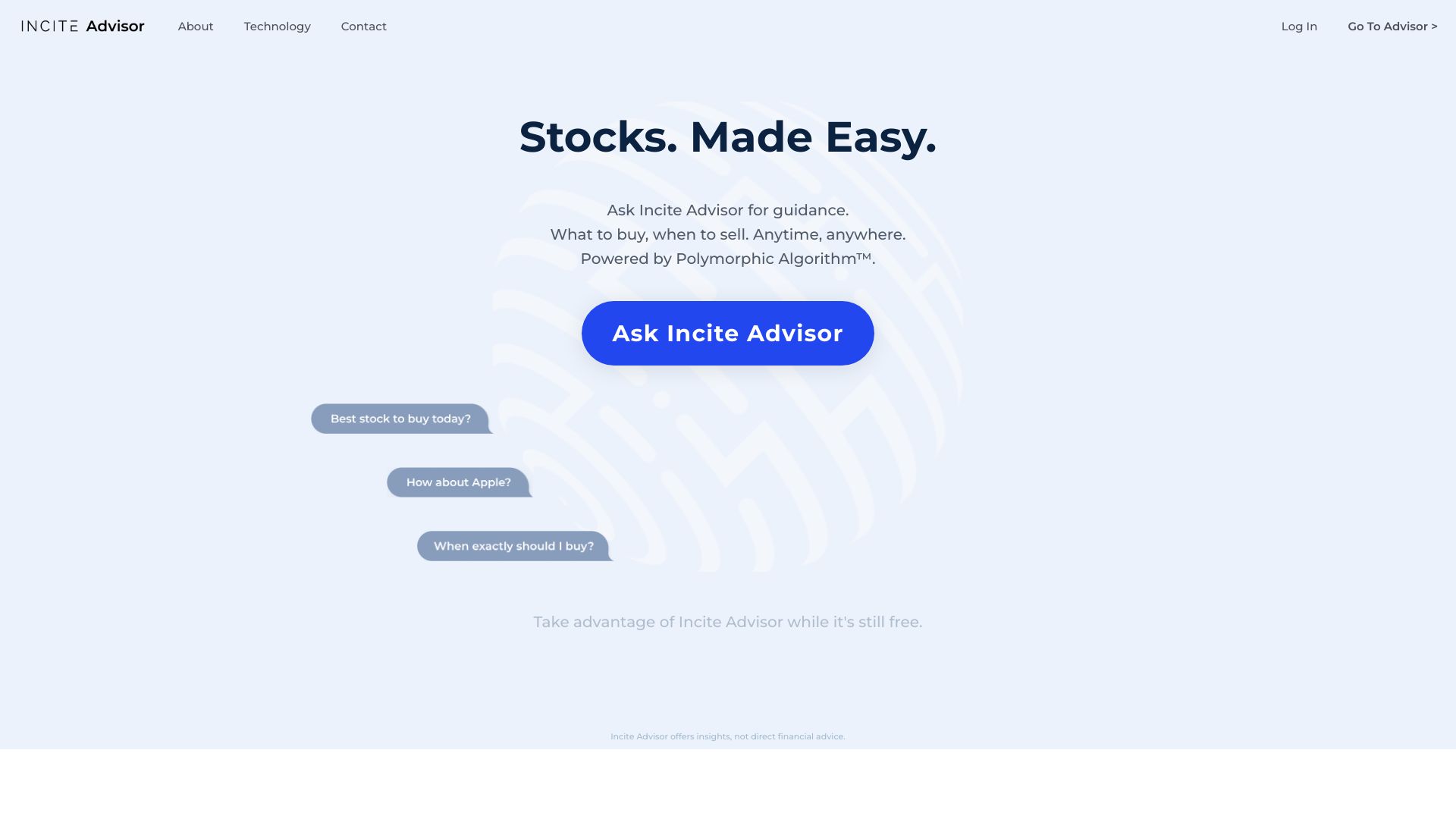In order for AI-driven trading platforms and stock prediction platforms to provide accurate and reliable insights it is crucial that they assess the accuracy of their data sources. A poor quality of data could result in inaccurate predictions and financial losses. It can also cause doubt about the platform. These are the top 10 suggestions to evaluate the quality of data and sources:
1. Verify source of data
Verify the source of data. Make sure the platform uses well-known and reputable data providers, such as Bloomberg, Reuters or Morningstar.
Transparency: The platform must clearly disclose its data sources and update them regularly.
Avoid relying on a single platform: trustworthy platforms typically combine data from multiple sources to reduce the chance of bias.
2. Assess Data Freshness
Data in real-time or delayed format: Decide if a platform is able to provide real-time data or delayed. Real-time data is essential in order to facilitate trading, while delayed data is sufficient to provide long-term analysis.
Verify the frequency of updating data (e.g. hourly, minute by minute or daily).
Historical data consistency: Check whether the historical data is clear of any gaps and anomalies.
3. Evaluate Data Completeness
Search for missing data. Look for gaps in historical data, ticker-less tickers or financial statements that aren't complete.
Coverage - Ensure that the platform you select covers all indices, stocks and other markets that are relevant to trading strategy.
Corporate actions: Check that your platform can account for stock splits or dividends. Also, make sure it is able to account for mergers.
4. Test Data Accuracy
Cross-verify the data: Check data on the platform against other sources of data you trust to assure consistency.
Error detection - Search for outliers and erroneous values or financial indicators that are not matched.
Backtesting using historical data for backtesting trading strategies to see if results match expectations.
5. Take a look at the data Granularity
In terms of level of detail, make sure that the platform can provide precise information, like price, volume bidding-asking spreads as well as order book depth.
Financial metrics: Check whether your platform has detailed financial reports (income statement and balance sheet) along with crucial ratios, such as P/E/P/B/ROE. ).
6. Clean up and processing of data
Normalization of data: Make sure the platform normalizes the data (e.g. making adjustments for dividends, splits) to ensure that the data remains consistent.
Outlier handling: Check how the platform deals with outliers or anomalies that are in the data.
Data imputation is not working: Find out whether the platform is using effective techniques to fill in gaps data points.
7. Assessment of Consistency in Data
Timezone alignment - Ensure that all data are aligned with the same local time zone in order to prevent discrepancies.
Format consistency - See whether the data is presented in the same way (e.g. units or currency).
Verify that the data is consistent across markets: Check for consistency from different exchanges and/or markets.
8. Relevance of Data
Relevance for trading strategies - Check that the information matches your trading style (e.g. quantitative modeling or quantitative analysis, or technical analysis).
Selection of features Choose a platform that is equipped with features that will enhance your predictions.
Check the integrity and security of your information
Data encryption: Ensure that the platform uses encryption to protect data storage and transmission.
Tamper-proofing (proof against alteration) Verify to be sure that the information was not altered or altered by the system.
Compliance: Find out whether the platform is in compliance with data protection regulations.
10. Test the Platform's AI Model Transparency
Explainability. You must be aware of how the AI uses data to come up with predictions.
Bias detection: Find out whether the platform is actively monitoring and mitigates biases in the model or data.
Performance metrics: Assess the reliability of the platform by looking at its history, performance metrics and recall metrics (e.g. precision or accuracy).
Bonus Tips
User reviews and reputation User feedback and reviews to gauge the platform's reliability and data quality.
Trial time: You are able to test the data quality and features of a platform by using a demo or free trial before deciding to buy.
Support for customers: Ensure that your platform has a robust assistance for issues related to data.
These guidelines will assist you assess the accuracy of data as well as the sources utilized by AI platform for stock predictions. This will allow you to make better informed trading decisions. Have a look at the best updated blog post for ai stock trading for site examples including investing ai, ai stock picker, ai for investing, ai investment app, ai for stock trading, ai for investment, ai for trading, ai for investing, ai investing platform, ai stock trading bot free and more.

Top 10 Tips To Evaluate The Risk Management Of Ai Stock Forecasting/Analyzing Trading Platforms
Risk management plays an essential part in any AI-powered platform for trading stocks. It helps protect your capital by limiting the risk of losses and assists you in maximizing profits. Platforms that have robust risk management tools will help you navigate the market volatility and make an the right decision. Here are the top 10 suggestions to assess the capability of risk management in these platforms:
1. Examining Stop-Loss or Take Profit Features
Customizable levels - Make sure that the platform lets you adjust your stop-loss, take profit and profit level for each strategy or trade.
Check if you can use trailing stops. They automatically adjust as the market moves towards your advantage.
If the platform offers stop-loss order guarantees that your position is closed to the amount specified in markets that are volatile and you are assured that you will be able to trade successfully.
2. Assessment Position Sizing Tools
Fixed amount: Make sure the platform allows you to define position sizes based on a fixed monetary amount.
Percentage of portfolio The best way to manage your risk by determining the size of your portfolio proportionally in terms of a percentage.
Risk-reward-ratio: Check if the platform lets users determine their own risk/reward ratios.
3. Make sure you are receiving assistance with diversification.
Multi-assets trading: Make sure that the platform supports trading across a variety of asset classes (e.g. stocks, ETFs options, forex, etc.) for diversification of your portfolios.
Sector allocation: Find out if your platform has tools to manage and monitor the exposure of your sector.
Geographic diversification - Check that the platform allows trading on international markets. This will allow you to diversify geographical risk.
4. Review leverage and margin controls
Margin requirements: Ensure that the platform clearly outlines any limitations on margins when trading leveraged.
Examine the platform to determine whether it lets you limit the leverage you use to limit risk.
Margin call: Ensure that the platform has timely notification for margin calls. This will help keep accounts from being closed.
5. Evaluation of Risk Analytics and Reporting
Risk metrics. Make sure your platform provides you with key risk indicators (e.g. VaR Sharpe Ratio, Drawdown) relevant to the portfolio you are managing.
Scenario evaluation: Make sure the platform you are using permits you to create market scenarios and analyze risk.
Performance reports: Verify whether the platform offers comprehensive performance reports, which include the risk-adjusted return.
6. Check for Real-Time Risk Monitoring
Portfolio monitoring. Make sure that your platform can track in real-time the risk associated with your portfolio.
Alerts: See if you can receive real-time notifications regarding events that are associated with risk (e.g. stop-loss triggers or breach of margins).
Risk dashboards: See whether the platform provides customizable risk dashboards to provide a comprehensive view of your risk profile.
7. How do you evaluate Stress Testing & Backtesting
Test your strategies for stress: Ensure that the platform you choose allows the testing of your strategies and portfolio under extreme market conditions.
Backtesting - Find out if your platform allows you to backtest strategies with previous information. This is a great way to assess risk and assess the performance.
Monte Carlo Simulators: Verify whether the platform uses Monte Carlo models to model possible outcomes and assess risks.
8. Verify Compliance with Risk Management Regulations
Regulatory compliance: Ensure the platform is in compliance with relevant risk management regulations (e.g., MiFID II in Europe, Reg T in the U.S.).
Best execution: Ensure that the platform follows best execution practices. Trades will be executed at the lowest price possible to minimize the chance of slippage.
Transparency Check the platform's transparency and clarity in risk disclosure.
9. Check for Risk Parameters that are User Controlled
Custom Risk Rules: Make sure you have the ability to create custom rules for managing risk (e.g. a maximum daily loss, a maximum size of tradable position).
Automated risk controls: Determine whether the system can automate the enforcement of risk management rules based on your predefined parameters.
Manual overrides Determine whether you are able to manually override the risk management system in a situation of emergency.
User feedback from reviewers and case studies
User reviews: Examine user feedback and analyze the effectiveness of the platform in managing risk.
Case studies Find cases studies or testimonials that show the platform's capability to control the risk.
Forums for community members Find out if there is an active community of traders who share their tips and strategies to manage risk.
Bonus Tips
Trial period: Try the demo or trial version for free to test the risk management capabilities of the platform in real-world situations.
Customer support: Check whether the platform offers robust support in relation to queries or concerns related to the management of risk.
Educational resources: Discover whether your platform provides educational materials or tutorials which explain risk management strategies.
Check out these suggestions to determine the risk management abilities of AI trading platforms that predict/analyze the price of stocks. Choose a platform with a high degree of risk management, and you can minimize your losses. Tools for managing risk that are durable are vital for trading in unstable markets. Take a look at the most popular web site about ai options for more info including stocks ai, free ai tool for stock market india, ai stock price prediction, investing with ai, ai copyright signals, best ai stocks to buy now, stock trading ai, best ai penny stocks, ai stock predictions, ai share trading and more.
